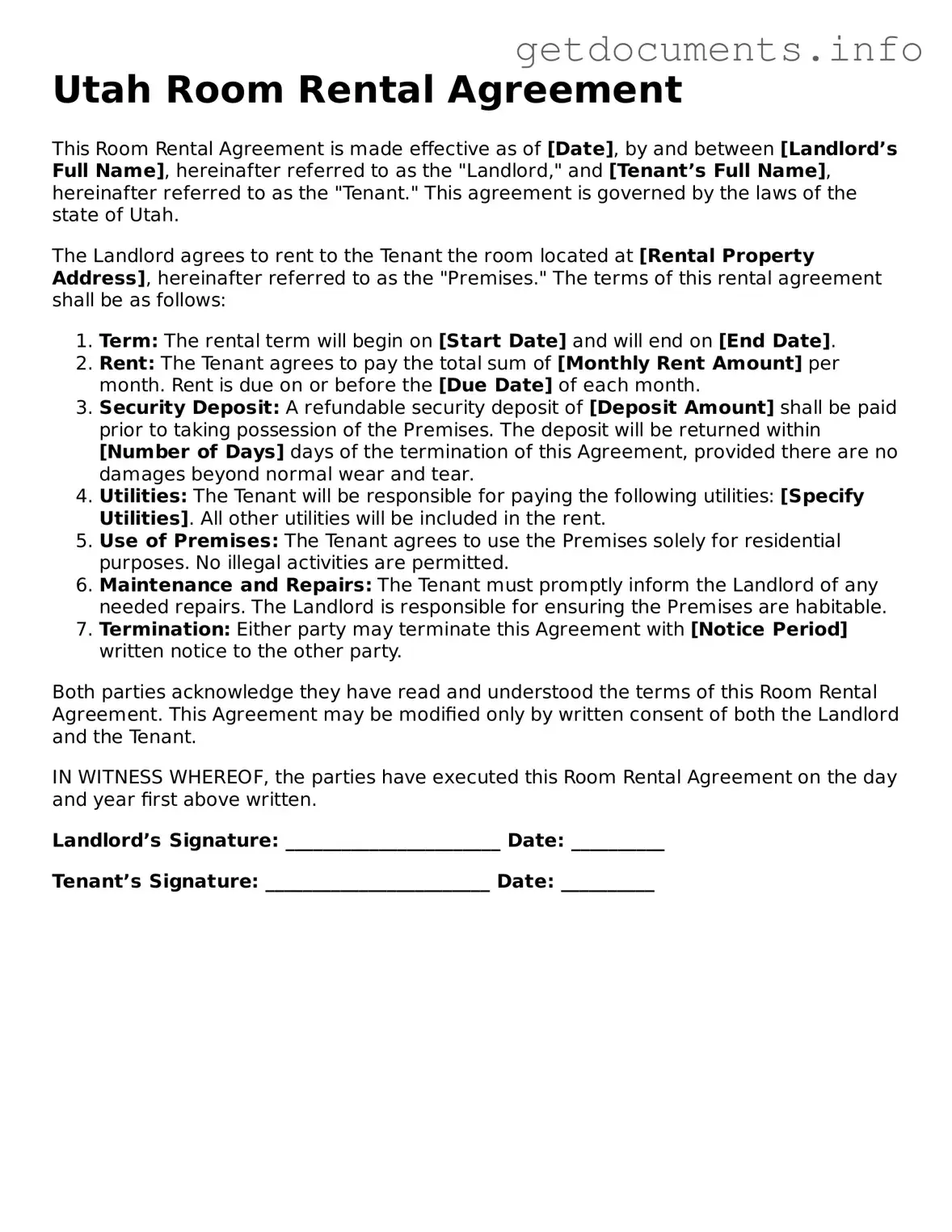The Utah Room Rental Agreement form serves as a crucial document for both landlords and tenants, outlining the terms and conditions of renting a room within a residential property. This form typically includes essential details such as the names of the parties involved, the address of the rental property, and the duration of the rental agreement. It also specifies the rental amount, payment due dates, and acceptable methods of payment. Additionally, the agreement covers important policies regarding security deposits, maintenance responsibilities, and rules related to guest access and property use. By clearly delineating these aspects, the form aims to protect the rights of both parties and minimize misunderstandings. Furthermore, it often includes provisions for termination of the agreement, ensuring that both landlords and tenants understand their obligations should circumstances change. In essence, the Utah Room Rental Agreement is designed to foster a transparent and respectful relationship between roommates and property owners, facilitating a smoother rental experience.
